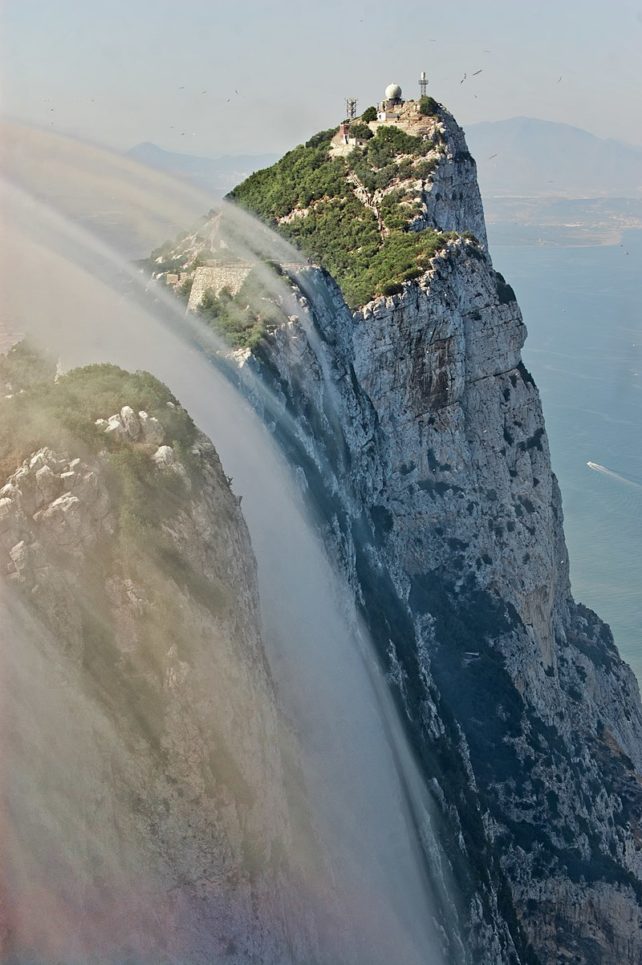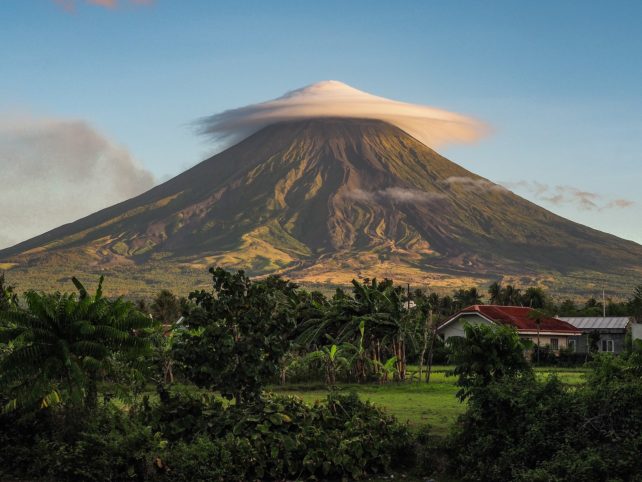Products You May Like
On the morning of August 24, a breezy late-summer wind carried a cascade of clouds over the Rock of Gibraltar.
The windy waterfall captivated onlookers, and a view from the airport was filmed and shared as a timelapse on the Met Office Gibraltar’s Twitter account.
The London Gatwick @easyJet flight taxiing and taking off from @RAF_Gib this morning with the backdrop of some impressive #Levanter cloud over the Rock of #Gibraltar
The #levanter cloud just keeps getting better today! #LevanterSpam pic.twitter.com/WYyOPktSij
— Met Office Gibraltar (@MetOGibraltar) August 24, 2022
The driving force of this stunning sight is a wind pattern known in the Strait of Gibraltar as the Levanter or Levante (which comes from the latin word ‘to raise’).
When these winds blow strongest between July to October, they can form a ‘banner cloud’ over the top of the region’s famed rock with long ribbon-like streaks.

This Spanish summer, the effect was particularly breathtaking.
The usually dry, easterly winds were strong enough and carried enough water vapor to create a spectacular scene.
As the easterly wind began to blow over the 426-meter-high limestone rock (1,398 ft), moist air at the bottom of the structure was forced upwards.
As the water vapor climbed, it condensed and formed a cloud that was then forced eastward by the wind, like white water rapids in the sky – or, as the name suggests, a 5-kilometer-long (3-mile-long) billowing banner, flying from a limestone pillar.
Banner clouds are also known to form on Switzerland’s Matterhorn and Mount Everest. In fact, the latter cloud structure is sometimes called the ‘highest wind vane in the world’.
Atmospheric structures like these that are shaped by our planet’s topography are known as orographic clouds, and they don’t always flow like the one seen recently in a time-lapse from Gibraltar.
Sometimes, they can just rest above mountains, volcanoes or natural pillars like little caps.
In other cases, winds flowing over a high structure can create twisting lenticular clouds, which look like spinning tops made from billows of moist air.

Wherever they occur, these incredible cloud formations have a way of grabbing our notice.
In Tibet, when an orographic cloud forms over Everest it is considered a sign of luck.
Who knows, maybe the Gibraltar cloud will prove serendipitous, too.
It’s certainly not the worst sight to see as you’re taking off or landing in a plane.
